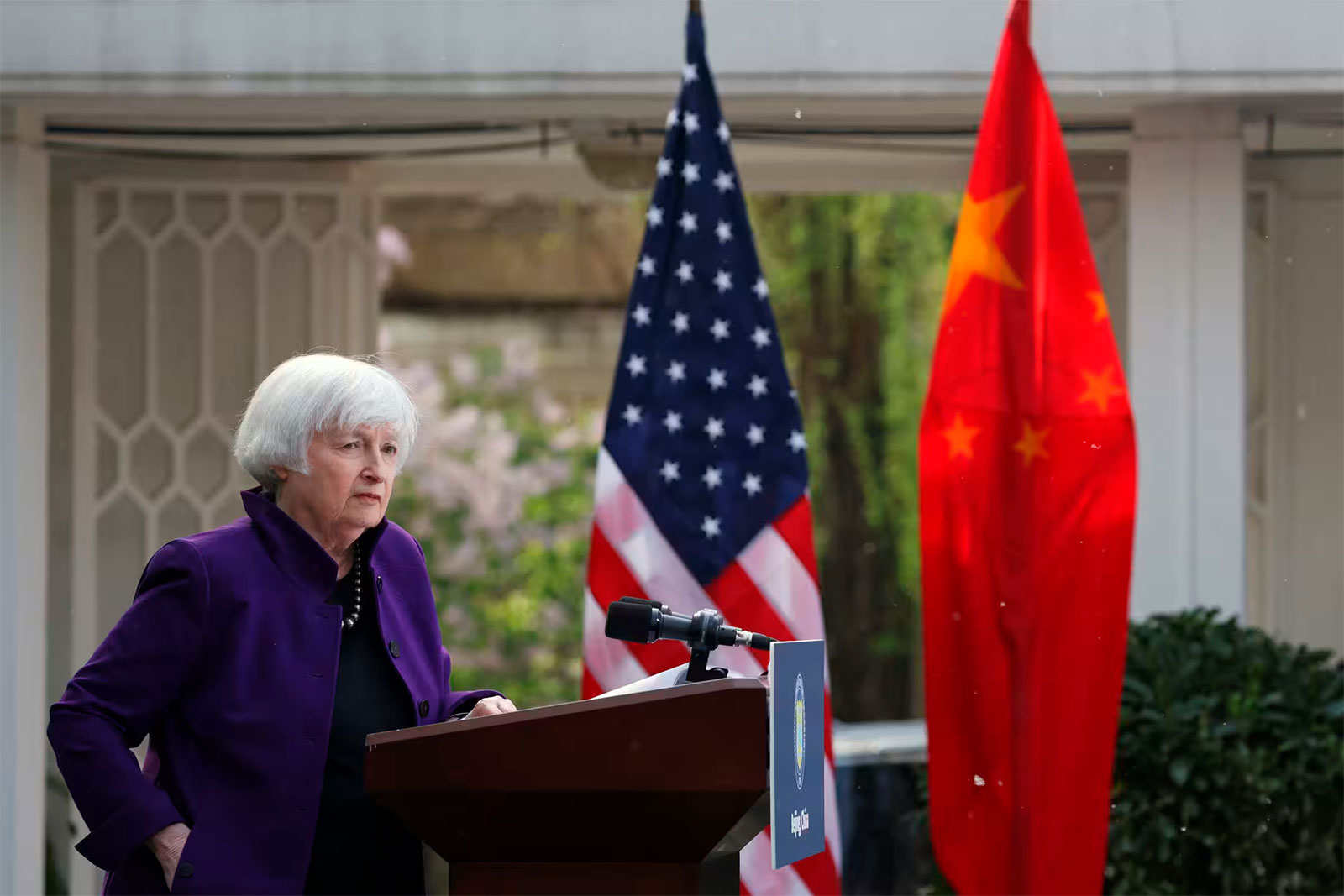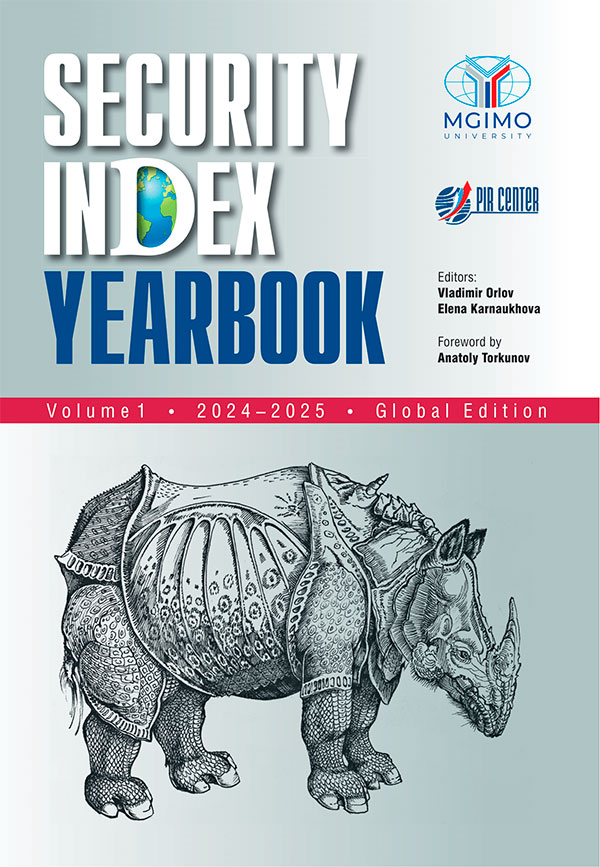The talks between Russia and the US raise the question of the freedom of action of the Trump Administration. To what extent is President Donald Trump limited by internal institutional frameworks and how sustainable can the results of his diplomacy be? One of the indicators is the policy of sanctions against Russia. They were used against Russia both before and after the start of the Special Military Operation (SMO). Their increase or cancellation are an important part of Washington's actions in escalation and de-escalation, respectively. The Biden administration, after the start of the SMO, pursued an active policy of sanctions against Moscow. However, Donald Trump refrained from using them after his inauguration. While the current president is in power, the only effective force that can influence his decisions on sanctions is the US Congress. Accordingly, questions arise as to how exactly Congress views the White House’s current policy of sanctions against Russia, and whether there are preconditions for tension between the two branches of government, similar to those that existed between the Obama Administration and Congress over the Iran nuclear deal.
Despite the fact that Congress remains Republican, one could expect opposition to Trump's moderation from Democrats and, perhaps, some Republicans.
However, in practice, such opposition has not yet been observed. Congress has not shown much activity regarding Russia, even at the level of bills. Since the beginning of 2025, that is, in less than five months, five bills have been introduced in both houses of Congress implying sanctions against Russia. For comparison, there are 10 bills against China and seven bills against Iran. We are talking only about bills that impose sanctions, not about reporting on them. On the Russian front, four bills were introduced by Republicans and Democrats together. Only one was introduced by a Democrat. This corresponds to long-standing practice, when anti-Russian bills on sanctions are introduced by representatives of both parties. On China, four out of 10 bills were introduced by Republicans, which also corresponds to long-standing practice—on the Chinese front, Republicans are more active. On Iran, three out of seven bills are purely Republican. But it should be noted that Republicans are generally much more active than Democrats on sanctions issues. Democrats introduce such bills alone much less often. Since the new year, there have been only four of them, while the Republicans have 20.
In conclusion, it is worth noting that the percentage of passage of sanctions bills is usually very low. Of the 55 bills in 2025, not a single one has been signed into law. Only one passed the House of Representatives—on sanctions against officials of the International Criminal Court. The rest have not gone beyond introduction in one of the chambers. More extensive data shows that less than 5% of sanctions bills pass. The likelihood of current projects passing seems low. However, it should be remembered that it is not only the issue of passing that is important, but also the inclusion of individual topics in the political agenda. They can begin to live their own life and be developed in new bills. In any scenario of Russian-American relations during the presidency of Donald Trump, the legislative framework of the sanctions policy towards Moscow will outlast the tenure of the current president by decades.
The talks between Russia and the US raise the question of the freedom of action of the Trump Administration. To what extent is President Donald Trump limited by internal institutional frameworks and how sustainable can the results of his diplomacy be? One of the indicators is the policy of sanctions against Russia. They were used against Russia both before and after the start of the Special Military Operation (SMO). Their increase or cancellation are an important part of Washington's actions in escalation and de-escalation, respectively. The Biden administration, after the start of the SMO, pursued an active policy of sanctions against Moscow. However, Donald Trump refrained from using them after his inauguration. While the current president is in power, the only effective force that can influence his decisions on sanctions is the US Congress. Accordingly, questions arise as to how exactly Congress views the White House’s current policy of sanctions against Russia, and whether there are preconditions for tension between the two branches of government, similar to those that existed between the Obama Administration and Congress over the Iran nuclear deal.
For most of the history of the United States, the president and his administration have played a decisive role in foreign policy. In addition to broad constitutional powers, the executive branch has enjoyed leadership in the matter of expertise and information on international affairs. The administration was better informed and included professional bureaucrats, while Congress did not have such opportunities. The situation began to change in the last quarter of the 20th century, when Congress began to claim a more active role in international affairs. In the application of sanctions, the president's powers were somewhat limited, including by the International Emergency Economic Powers Act of 1977 (IEEPA). The law regulated the president’s power to declare a state of emergency on a particular issue on the international agenda and to impose sanctions. Legislative activity on foreign policy issues, attempts to increase the accountability of the executive branch, and the use of budgetary powers in bargaining with the executive branch intensified. Although the president retained a high degree of autonomy in international affairs and the application of sanctions, on certain issues Congress created “webs of laws.” Sanctions were fixed in federal legislation, and the president could not lift them at his will. The two branches of government tend to cooperate on international issues, but on some issues Congress tried to play a restraining role. Thus, legislators showed growing scepticism about the wars in Iraq and Afghanistan. They actively resisted the Iranian nuclear deal, creating tools for accountability regarding its implementation. The adoption of the Magnitsky Act in 2012 complicated Barack Obama’s diplomacy toward Russia.
Against the backdrop of the Ukrainian crisis in 2014, Congress showed unanimity with the Obama Administration in containing Russia. Obama’s executive orders on the state of emergency in connection with the events in Crimea and Donbass, as well as the subsequent sanctions, were supported by the Support for the Sovereignty, Integrity, Democracy, and Economic Stability of Ukraine Act (SSIDES) and the Ukraine Freedom Support Act (UFSA). In 2017, amid speculation that President Trump harboured a “pro-Russian” position, Congress passed the Countering America’s Adversaries Through Sanctions Act (CAATSA). It codified Obama’s executive orders, defined restrictions on lifting sanctions on Russian individuals, and introduced new restrictions. Trump did not resist the new legislation, but he did not show zeal in implementing it either. On issues that Trump considered important to himself, he himself promoted sanctions against Russia. Thus, he actively supported the passage of the Protecting Europe's Energy Security Act (PEESA) and its subsequent version, designed to complicate the Nord Stream 2 project and create more favourable conditions for American energy resources on the European market.
Joe Biden distanced himself somewhat from Congress on the Russian front by creating a new legal mechanism for sanctions against Moscow. Executive Order 14024 of April 15, 2021, did not go through Congress, which means it left the Administration with more freedom of action. However, on the eve of and after the start of the SMO, both branches acted in concert. Congress played an active role in political signalling, introducing a number of bills with possible sanctions against Russia. After the start of the operation, legislators did not show excessive zeal, leaving the Administration room to manoeuvre. However, over time, a number of restrictive measures did acquire legislative force. These include the suspension of imports of Russian energy resources, the suspension of normal trade relations, the threat of sanctions against buyers of Russian gold, a ban on uranium imports, and a legal mechanism for the confiscation of Russian sovereign assets. In the general flow of restrictions, these sanctions constituted only a small share.
After Donald Trump returned to the White House in 2025, American diplomacy attempted a peaceful settlement of the Ukrainian issue. A relatively weak, but still unusual positive signal, unthinkable for the past three years, was Washington's evasion of sanctions on the anniversary of the start of the SMO on February 24, 2025, while other allies imposed sanctions. Despite the fact that Congress remains Republican, one could expect opposition to Trump's moderation from Democrats and, perhaps, some Republicans.
However, in practice, such opposition has not yet been observed. Congress has not shown much activity regarding Russia, even at the level of bills. Since the beginning of 2025, that is, in less than five months, five bills have been introduced in both houses of Congress implying sanctions against Russia. For comparison, there are 10 bills against China and seven bills against Iran. We are talking only about bills that impose sanctions, not about reporting on them. On the Russian front, four bills were introduced by Republicans and Democrats together. Only one was introduced by a Democrat. This corresponds to long-standing practice, when anti-Russian bills on sanctions are introduced by representatives of both parties. On China, four out of 10 bills were introduced by Republicans, which also corresponds to long-standing practice—on the Chinese front, Republicans are more active. On Iran, three out of seven bills are purely Republican. But it should be noted that Republicans are generally much more active than Democrats on sanctions issues. Democrats introduce such bills alone much less often. Since the new year, there have been only four of them, while the Republicans have 20.
The most notable bill on Russia is H.R. 2548, which proposes sanctions for refusing to negotiate on Ukraine. A similar bill, S.1241, has been introduced in the Senate. Despite the volume and range of proposed sanctions, it contains little that’s new. For example, Article 5 proposes sanctions against senior Russian officials. But they are already under blocking financial sanctions. The same article proposes sanctions against foreign individuals who interact with the Russian armed forces, harm Ukraine, work in strategic sectors of the Russian economy, are “oligarchs,” are associated with the Russian government, are involved in causing harm to US citizens, undermine the integrity of the US, circumvent US sanctions, as well as individuals associated with the aforementioned individuals. But the Administration has long had mechanisms for all of these points. The same can be said about sanctions against Russian financial institutions (Article 6). Most Russian banking assets are already under blocking sanctions. The same applies to organisations associated with the Russian government (Article 7). The existing mechanisms already allow them to be blocked. The same applies to bans on the movement of funds to and from Russia (Article 8). In the draft, this norm is more fundamental than in the mechanisms of the executive branch, but in fact, the movement of funds is already significantly blocked due to sanctions against banks. The ban on the listing of Russian companies in the United States is clearly excessive (Article 9), given that it is simply impossible to imagine it in the current conditions. The ban on investments (Article 10) has been in effect in the mechanisms of the executive branch since 2022. The same applies to the energy sector (Article 11). In its case, there are bans at the legislative level. The same applies to bans on transactions with Russian sovereign debt (Article 12), to some extent—the transfer of financial messages (Article 13)—SWIFT's activities have long been transparent to the US authorities and the main provider of such services is unlikely to bypass sanctions. The ban on uranium imports is already enshrined in law (Article 14). The ban on import duties on Russia (Article 15) is clearly excessive given the sanctions already in force. The call to impose sanctions from the list in Article 235 of the CAATSA Act is equally excessive. The threat of duties on countries buying Russian oil, oil products and uranium (Article 17) stands out from this series. The White House has not yet used such a ban, apparently out of fear of destabilizing international markets and harming the United States itself. In the end, most of these mechanisms have long existed in the decrees of the US President. Their codification will complicate the de-escalation of sanctions, but will not provide a noticeable increase in escalation.
The remaining projects are less remarkable. Bill S. 1490 proposes sanctions against the Russian "shadow" tanker fleet. Such sanctions were actively used by the White House until Trump returned to office in 2025. The H.R. 476 bill threatens sanctions for participation in the construction of the Crimean Bridge and Tunnel. But here, too, the White House has long been ahead of the game. Even the 2014 mechanisms are applicable here. The H.R. 475 bill proposes sanctions for damage to the safety of the Zaporizhzhya NPP. But it is very difficult to imagine what new features the proposed restrictions could provide against the background of those already introduced against a wide range of Russian government organizations and officials. As in the above-described bills, these bills will not bring anything fundamentally new to the sanctions regime, although they will complicate possible de-escalation.
In conclusion, it is worth noting that the percentage of passage of sanctions bills is usually very low. Of the 55 bills in 2025, not a single one has been signed into law. Only one passed the House of Representatives—on sanctions against officials of the International Criminal Court. The rest have not gone beyond introduction in one of the chambers. More extensive data shows that less than 5% of sanctions bills pass. The likelihood of current projects passing seems low. However, it should be remembered that it is not only the issue of passing that is important, but also the inclusion of individual topics in the political agenda. They can begin to live their own life and be developed in new bills. In any scenario of Russian-American relations during the presidency of Donald Trump, the legislative framework of the sanctions policy towards Moscow will outlast the tenure of the current president by decades.
First published in the Valdai Discussion Club.






